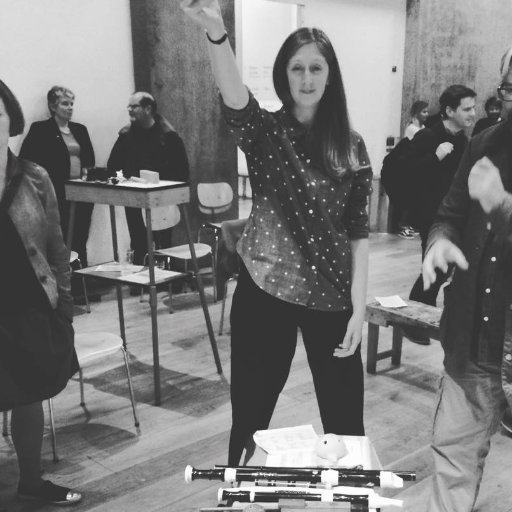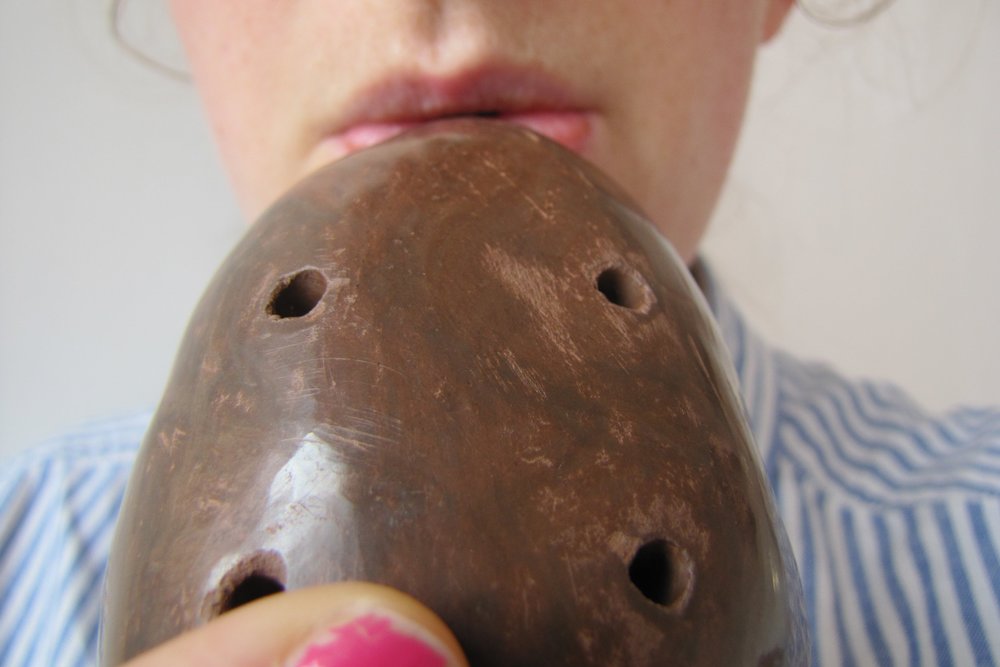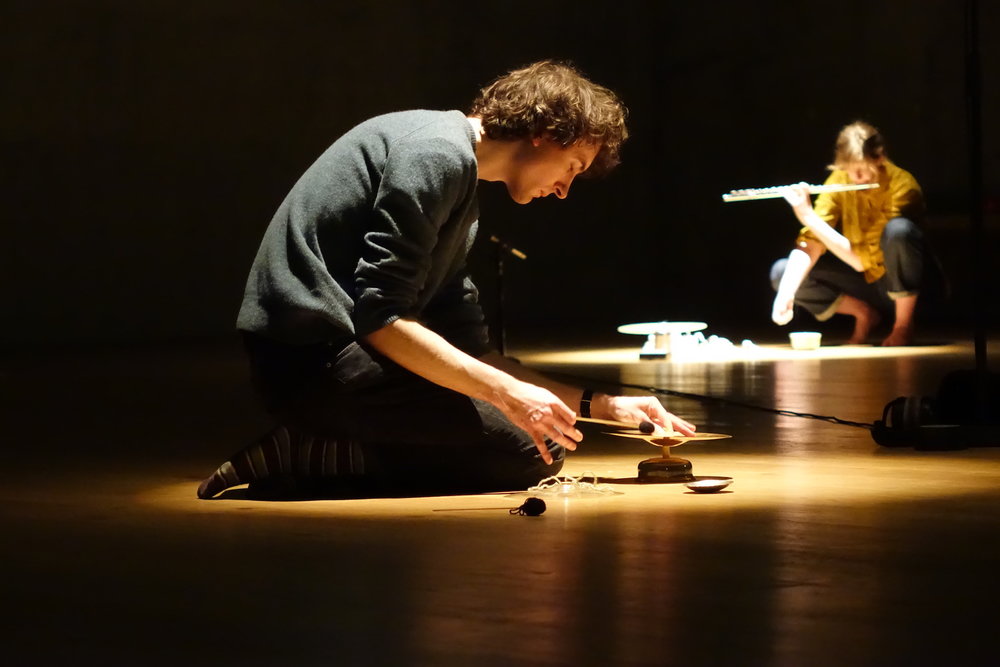
Last year, I had the pleasure to witness and experience “If the bell rings we will hear it” by Rebecca Lee and Samuel Rodgers inside St Mary Le Wigford Church in Lincoln (UK). This truly fascinating and -possibly helped by the place- almost religious performance made me curious about those two artists, who conveniently felt like the perfect topic for this month’s theme about Sound Installations. Sit back, relax, and dive into the sonic world of Rebecca Lee with us.
How would you introduce yourself? As an audio designer? A performer? Both? Something else?
It does vary, but I usually describe myself as an experimental musician and sound artist. Even projects where I’m working with spoken word or audio recording, or making an installation can feel like an extension of a kind of music making or an engagement (sometimes critically) with music.
What drove you towards the exploration of the world of sound?
I’ve been playing music since I was young, and studied music at university, specialising in contemporary and twentieth century approaches. Alongside this, and probably at least if not more important than my university studies, I was in a band/ensemble with other musicians and artists – everyone came from different backgrounds. We were interested in making projects as well as just recordings or playing gigs. So we often played in unusual spaces or tried out experimental ideas. I think this was where I was able to be more curious about the function of music and what existed around the edges. After uni, I started to explore sound recording more, and spent a lot of time running creative school or community projects which explored sound which kind of brought together all the things I was interested in.
Based on your projects, you seem to be quite interested by the relationship sound has with space. Could you tell us more about that?
In our band, we often played in unusual venues or spaces and at uni, I was interested in breaking up the concert hall/concert set up. It just seemed limiting and self-referential. I guess that since then, I’ve been exploring either how sound or music can be made more dynamic in a certain spaces not only because of different acoustics but also because of the social or cultural aspects of a space. This is true for performances with Samuel (Rodgers – editor’s note) in different kinds of venue, as much as it is for an installation or project I could do. You could argue, for instance, that the sound quality of work that is compressed for a community radio broadcast is not always the best, and yet, the mode of sharing that that broadcast represents, brings a whole other set of characteristics to the piece. Sound takes up space, in a messy and unpredictable way, so for some work, for instance, Song Sung When, which I did at a National Trust garden, really interrupted the spaces in the garden. By working in this way, the sound itself brings its own qualities which then are activated by or cause the activation of the space around them. This jolt, or intervention then hopefully means people experience the space or their reaction to it differently.

As you are doing a lot of sound capture and recordings, could you tell us a bit about your gear?
I’m not ashamed to say that my gear is pretty basic. I’ve never had budget enough to really invest, so I use a Zoom H5 and some additional mics for specific recordings. It’s not flashy, but I just try and be consistent, work with good engineers where I need to (shouts out to Jim and Daz!!) and set up carefully. I generally believe that finding the right recording, which might take time, patience, or negotiation and working with others is more important than the equipment. But I guess that’s also because my priorities in my work often are about those aspects of sound too
What artists, would you say, are and have been influencing you the most before and during your journey?
I’m as influenced by writers and visual artists as I am by musicians or sound artists. Most recently I’ve been looking again at the approaches that Meredith Monk and Laurie Anderson use, as well as the way that visual artist Elizabeth Price uses rhythm and phrasing in her work. I’ve previously looked to the writing of Kathleen Jamie, compositional approaches by groups like the Scratch Orchestra or Pauline Oliveros. Before, I was lead by the bands I was in to, or musicians like Carla Rees who I was lucky to be taught by, or the composers around me at university.
In the description of your project Taste of a Stone, you mention the influence of The Legend of Zelda: Ocarina of Time. Do you have a particular interest in the game audio scene and, if so, what thoughts or opinions do you have about the use of sound in video games?
I thought you might pick up on that! I took part in performances which were part of an art work by Otobong Nkanga. Otobong invited local musicians, writers, dancers and artists to respond to her installation (Samuel also performed). I had been exploring making Xun and Ocarinas at the time, and was interested in the unusual place they had – somewhere between folk instruments or toys. The fact that they were included in the Legend of Zelda games and used to cast spells was quite a funny twist in their story too, so I thought I’d try and play them in an experimental way, and see what kind of influence that had on the atmosphere of the installation. Beyond that, I’m afraid I’ve not had any involvement with game audio.

How did you and Samuel Rodgers meet and what pushed you to work together?
We met in 2013 when Jack Harris, a performer and composer did a residency at Primary, the studios where I’m based in Nottingham. Samuel had played with Jack previously and during the residency, I got involved with helping them perform some of the scores. It’d been a while since I’d done much improvisation and we found that we had a similar approach or idea about playing sound (in spaces). Shared interested in ideas about synchronicity in performance, resonance, harmonics, extended playing techniques and actually working on a shared language (rather than following individual improvisations that occasionally overlap) meant we arranged to work together some more and then played our first two concerts together in at Oxford Improvisers and Rammel Club in Nottingham.
Could you introduce « If the bell rings we will hear it » a bit?
If the bell rings, we will hear it is a research and development project we began last year after a couple of years of playing together. We wanted more time to exploring the reciprocity between materials, space and audience in live improvised performance. We’re doing a series of performances and residencies, and developing a new body of work that focuses on the performer, their materials, the space, environment, and audience as listening, seeking to allow synchronicities between these elements to emerge. We are interested in how these elements feed into one another to create a contingent experience in the here and now that cannot be prescribed beforehand, and in exploring ways in which we can share such an experience with others. We’re keen to make improvised or intuitive performances that acknowledges or involves the audience in some way, rather than take place in spite of them and use venues that might be quite ‘imperfect’ in terms of background noise or other noise – not standard performance spaces. Recordings from the project concerts will be used for a release which will be available generally, but also shared with the people who came to the concerts during the project.

I had the pleasure of assisting to your performance last year at the Sonophilia Festival in Lincoln (UK) and really felt like a breathtaking solemn tension progressively taking place into the church. What kind of feedback do you usually get from your performances? Any specific ones that felt special to you?
The feedback really varies, but usually, I’m pleased to say, people feel like they’ve been involved in something, and not a bystander. Not long after the Lincoln performance, we played at Nottingham Contemporary and one of the comments that stuck with me was from someone who said they had continued to hear certain sounds even after he could see we’d stopped playing them. I try and perform by making a connection with sounds already happening in a space, so I’m pleased that there is some blurring around what sounds I am making and what sounds are just there.
As as performer, what do you get from those performances, both in terms of feelings and experience?
The performances push me and my playing further, and since we began, I feel we’ve developed a kind of musical/sonic language that I don’t get playing with other people. I’m really keen on how experimental performance can be an experience of everyone involved, so I enjoy the times when, like in Lincoln, we have a varied audience, and the setting is welcoming.